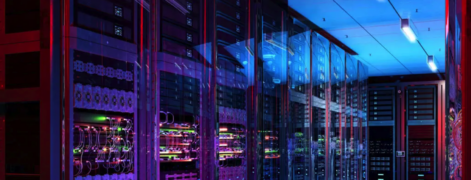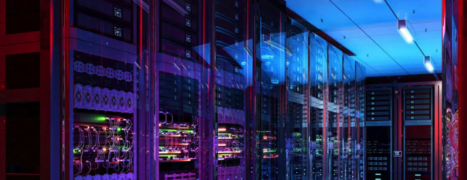How CIOs Balance Centralized and Decentralized IT

In today’s dynamic business environment, CIOs are tasked with optimizing IT operations to enhance efficiency, innovation, and responsiveness. A key challenge they face is determining the right balance between centralized and decentralized IT models. Both approaches have their advantages and drawbacks, and finding the ideal mix can be complex, as it depends on factors like organizational structure, industry, security requirements, and speed of decision-making. This article delves into the differences between centralized and decentralized IT models, the benefits and risks of each, and how CIOs can find the right balance to align with business objectives.
1. Understanding Centralized vs. Decentralized IT
- Centralized IT: In a centralized IT model, decision-making authority and resources are concentrated in a single, core IT department. This department is responsible for setting standards, managing infrastructure, ensuring security, and supporting all other business units. Centralized IT tends to provide greater control, consistency, and cost efficiency across the organization.
- Decentralized IT: Decentralized IT distributes authority, resources, and decision-making capabilities across different departments or business units. This model gives individual units autonomy over their own IT needs, enabling them to select tools and technologies tailored to their unique requirements. Decentralized IT fosters flexibility, innovation, and responsiveness at the business-unit level.
Finding the right balance between centralized and decentralized IT depends on an organization’s size, structure, goals, and the unique demands of its industry.
2. Benefits of Centralized IT
Centralized IT offers several key advantages, particularly in terms of control, consistency, and resource allocation.
- Improved Security and Compliance: Centralized IT enables the CIO to implement consistent security policies across the organization, reducing the risk of data breaches and regulatory non-compliance. Centralization makes it easier to enforce strict security standards, manage user access, and monitor for threats.
- Cost Savings through Economies of Scale: By centralizing IT resources, organizations can reduce redundancy, consolidate software licenses, and standardize hardware, leading to significant cost savings. Bulk purchasing and enterprise-wide contracts further contribute to these savings.
- Standardization and Consistency: Centralized IT promotes a standardized approach to technology, simplifying processes like software updates, troubleshooting, and support. Standardization makes it easier to manage and maintain IT systems, reducing complexity and improving reliability.
- Easier Resource Management: A centralized IT model allows CIOs to allocate resources more effectively, directing IT investments toward high-priority projects and managing human resources efficiently.
While centralized IT enhances control and consistency, it may introduce bottlenecks or limit agility in fast-paced business environments.
3. Benefits of Decentralized IT
Decentralized IT can be advantageous for organizations that prioritize agility, innovation, and responsiveness to unique business unit needs.
- Greater Flexibility and Agility: Decentralized IT empowers individual departments to quickly adapt technology to their specific needs, enabling faster responses to market changes and customer demands. This is particularly beneficial for organizations in highly competitive or rapidly evolving industries.
- Enhanced Innovation: With greater autonomy, business units are free to experiment with emerging technologies and adopt solutions that foster innovation. Decentralization allows for a more tailored approach to technology adoption, making it easier to pilot new tools and techniques.
- Improved User Satisfaction: Decentralized IT often leads to more customized IT support and solutions, tailored to the needs of specific departments. Employees are more likely to feel that their requirements are being met, improving satisfaction and productivity.
- Reduced Bottlenecks: By removing the need for centralized IT approval for every decision, decentralized IT reduces bottlenecks and accelerates project timelines.
While decentralized IT fosters innovation and agility, it can also lead to inefficiencies, increased costs, and a lack of cohesion across the organization.
4. Challenges of Balancing Centralized and Decentralized IT
Striking a balance between centralized and decentralized IT is challenging and requires CIOs to weigh trade-offs carefully. Key challenges include:
- Maintaining Security and Compliance: Decentralized IT increases the risk of inconsistent security practices and regulatory non-compliance. Without centralized control, individual departments may adopt lax security measures or fail to adhere to compliance standards.
- Controlling Costs and Redundancy: Decentralized IT can lead to duplicated resources, higher software licensing costs, and inefficiencies from purchasing multiple solutions. Costs can quickly escalate if each business unit independently adopts and maintains its own tools.
- Ensuring Consistency and Interoperability: Different departments may use incompatible systems, creating data silos and operational inefficiencies. Inconsistency across systems can complicate data sharing, reporting, and integration with core business functions.
- Aligning with Strategic Goals: A decentralized model may result in departments prioritizing their own goals over organizational objectives. This lack of alignment can lead to missed opportunities and an inability to leverage technology strategically across the enterprise.
CIOs must address these challenges by creating policies, frameworks, and governance structures that promote a unified approach to IT while allowing for localized autonomy.
5. Strategies for Balancing Centralized and Decentralized IT
Achieving the right balance involves a combination of governance, flexible policies, and targeted investment in technology solutions.
- Develop a Hybrid IT Model: Many organizations adopt a hybrid approach, centralizing core infrastructure and security while decentralizing applications and support to individual business units. This model enables consistency in critical areas while allowing departments to tailor technology to their needs.
- Implement IT Governance Frameworks: Establishing a governance framework provides guidelines for IT decision-making and promotes alignment with organizational goals. Policies on vendor selection, software usage, and data sharing can help standardize practices across decentralized units.
- Foster Communication and Collaboration: Encourage regular communication between centralized IT and decentralized departments. This collaboration fosters knowledge sharing, innovation, and alignment with strategic priorities. Cross-functional teams can help bridge the gap and ensure consistent implementation of best practices.
- Use Cloud-Based Solutions: Cloud platforms offer centralized management capabilities while allowing decentralized access and customization. Organizations can use Software as a Service (SaaS) or Platform as a Service (PaaS) models to provide consistency and scalability while giving departments the flexibility to adapt services to their needs.
- Establish Clear Security Standards: Security is often best managed centrally, even in a decentralized model. CIOs can establish uniform security protocols and data protection policies that departments must follow. Centralized monitoring and incident response can further strengthen security while maintaining departmental flexibility.
- Encourage Innovation with Guardrails: CIOs can promote innovation by creating “guardrails” that allow departments to experiment within specific boundaries. This approach encourages agility and creativity while maintaining organizational standards and preventing the adoption of incompatible or non-compliant solutions.
A balanced strategy allows organizations to harness the benefits of both centralized and decentralized models, promoting efficiency and flexibility.
6. Case Studies and Real-World Examples
Real-world examples can illustrate how different organizations have successfully balanced centralized and decentralized IT:
- Financial Institutions: Due to stringent regulatory requirements, many banks centralize their core IT functions and security while decentralizing customer-facing applications to allow branches to meet local customer demands.
- Retail Industry: Large retailers often centralize their data management and analytics functions to maintain a unified view of customer data, while allowing regional offices autonomy in selecting tools to manage inventory, marketing, or staffing needs.
- Technology Companies: Tech companies may centralize infrastructure, DevOps, and security functions while allowing product teams to choose specialized tools or frameworks to accelerate development and encourage innovation.
These examples highlight how organizations can customize their IT model to suit their industry’s unique needs and challenges.
7. The Role of CIOs in Managing the Balance
As the primary leaders of technology strategy, CIOs play a vital role in finding and maintaining the right balance between centralized and decentralized IT. Key responsibilities include:
- Aligning IT Strategy with Business Goals: CIOs must ensure that both centralized and decentralized IT initiatives align with overarching business goals. This requires regular communication with business unit leaders to understand and support their needs.
- Monitoring and Adjusting the Model: IT models are not static; they need to evolve with the organization. CIOs should continuously assess the effectiveness of their IT model and make adjustments based on changing business needs, technology advancements, and feedback from departments.
- Balancing Control with Flexibility: CIOs must walk a fine line between enforcing standardized practices and allowing for autonomy. This balance requires setting boundaries and developing policies that promote consistency without stifling innovation.
- Fostering a Culture of Collaboration: Effective collaboration between centralized and decentralized teams is crucial. CIOs can encourage a culture where IT staff view each other as partners, rather than as separate or competing units.
Through strategic oversight and adaptive leadership, CIOs can maintain an optimal balance that leverages the strengths of both models.
Conclusion
Balancing centralized and decentralized IT is a complex yet essential task for CIOs aiming to drive business value and maintain a secure, efficient, and agile technology environment. By adopting a flexible, hybrid approach, establishing robust governance frameworks, and fostering collaboration, CIOs can create an IT strategy that supports both organizational consistency and departmental autonomy. With this balanced approach, organizations can harness the benefits of centralized control while empowering individual units to innovate, adapt, and meet specific business demands.







